Main menu
Common skin conditions

NEWS
Join DermNet PRO
Read more
Quick links
Author: Dr Giri Raj, Dermatologist, New Plymouth, New Zealand; Dr Amanda Oakley, Dermatologist, Hamilton, New Zealand, 2013.
Introduction Normal eye anatomy Parts affected by melanoma Causes Demographics Diagnosis Progression Tests Treatment Follow-up Outlook
Melanoma is a malignant tumour of melanocytes. Ocular melanoma refers to melanoma of the eye, and accounts for about 5% of all melanomas [1]. Primary ocular melanoma is the most common primary malignant tumour of the eye in adults [2].
Melanocytes are cells that produce pigment (melanin). Dark skin has more active melanocytes than has fair skin. More melanin is produced by melanocytes in response to sun exposure and may result in patchy pigmentation on the surface of the eye, called melanosis.
Melanocytes often cluster as pigmented moles on the skin, properly called melanocytic naevi. They are harmless. Melanocytic naevi may also arise on the conjunctiva. They are sometimes present at birth (congenital melanocytic naevus).
Collections of melanocytes in the deeper tissues of the eye are called ocular melanocytosis. Naevus of Ota is a form of dermal melanocytosis that may involve the eye.
Primary ocular melanomas can be divided into 2 types:
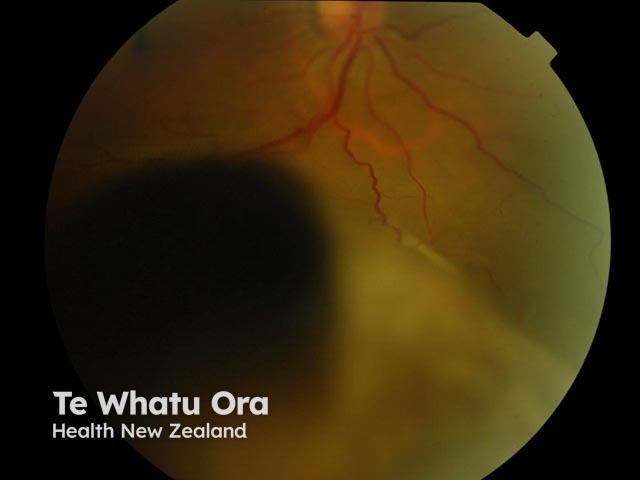
Uveal/choroidal melanoma

Uveal/choroidal melanoma

Uveal/choroidal melanoma
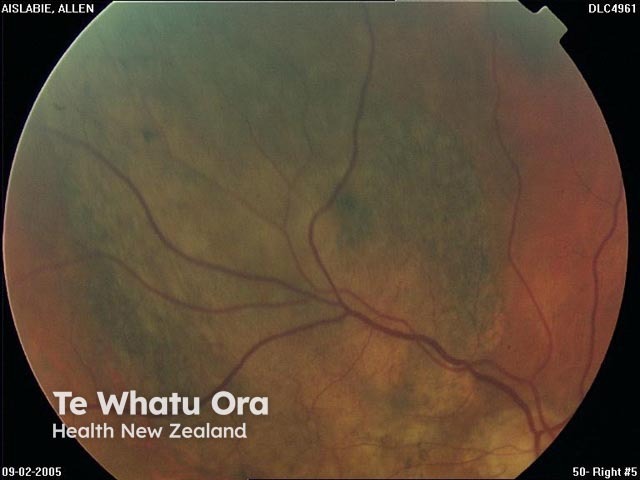
Uveal/choroidal melanoma

Uveal/iris melanoma
*Images supplied by Dr Stephen Guest
Cutaneous melanoma can also affect the eyelid, but these are not considered ocular melanomas.
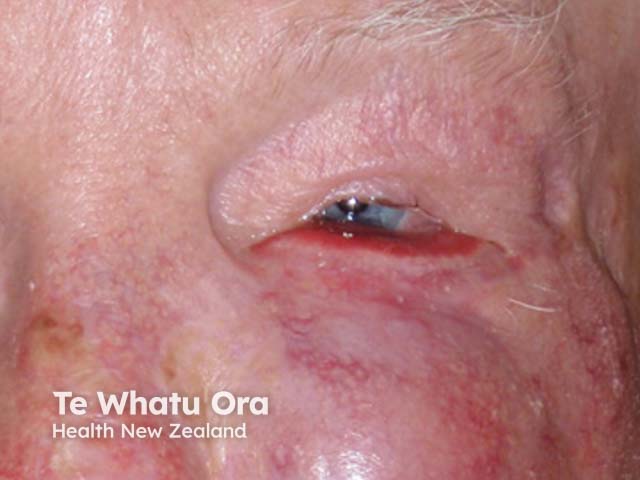
Eyelid melanoma
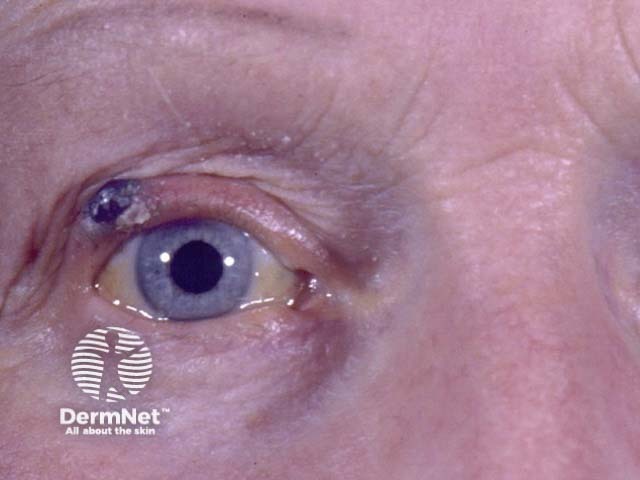
Eyelid melanoma
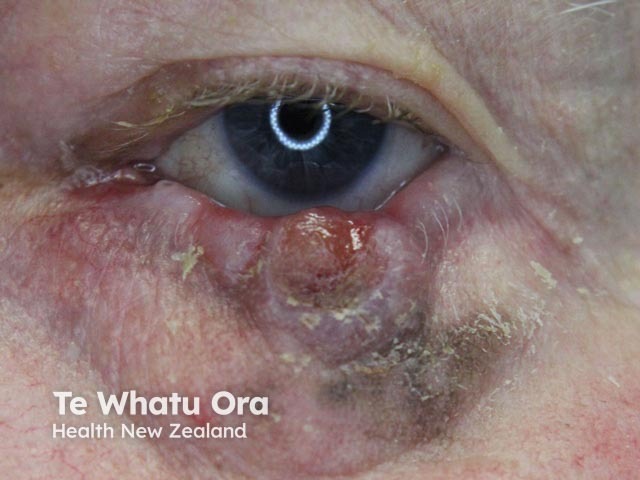
Eyelid melanoma
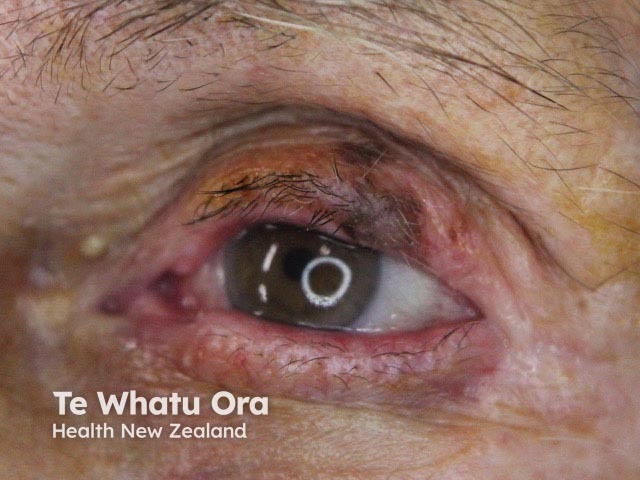
Eyelid melanoma
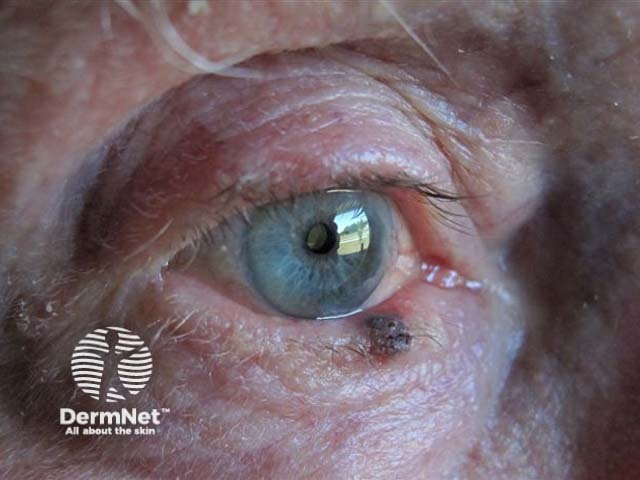
Eyelid melanoma
**Images supplied by Dr Stephen Ng
Like other forms of melanoma, ocular melanoma occurs because of genetic changes within melanocytes that cause the cells to proliferate. Further changes in the cells cause them to invade surrounding tissues and to spread elsewhere round the body (metastasise).
Many reports suggest exposure to sunlight may be an important factor in the development of ocular melanoma.
Both males and females appear to have equal incidence of ocular melanoma. The peak incidence of presentation is closest to 62 years of age.
Those most at risk of ocular melanoma are of Caucasian race and have fair skin and light iris colour. However, melanoma may also affect those with darker skin and eye colour.
Melanosis, congenital ocular melanocytosis and neurofibromatosis are also associated with increased risk.
Patients with conjunctival melanoma tend to have many melanocytic naevi (moles). It is thought that about 20% arise from naevi and about 60-75% within conjunctival melanosis.
Diagnosis of ocular melanoma is usually made by accurate clinical examination. The main indicators of disease in 90 patients described in a Canadian study were:[3]
Conjunctival melanoma presents as an increasingly irregular pigmented lesion on the external eye.
Other symptoms may include a protruding eye, change in colour of the iris, red or painful eye, and retinal detachment.
Half of all patients develop metastatic disease within 15 years after the primary tumour has been treated. Unfortunately there is no cure for metastatic disease.
Metastasis occurs by either local extension or blood dissemination. Transscleral spread may occur through ciliary nerves, veins, arteries or aqueous drainage channels. There is no lymphatic network in the uveal tract. Distal metastases occur in the liver in over 80% of cases. The lung, bones and skin are sometimes also involved.
Poor prognosis is associated with:
When treated early, melanoma of the iris is less likely to impair vision or metastasise when compared to other uveal melanomas.
Histological features associated with higher metastatic risk include:
Advances in detecting genetic changes in melanoma enables the diagnosis of tumours with high metastatic potential.
Genetic alterations associated with poorer prognosis in uveal melanoma include:
Chromosome 6p gain is associated with a better prognosis and it may act to delay or prevent chromosome 3 loss.
Which tests are chosen depends on the clinical presentation and what is available. They may include:
Local treatments for ocular melanoma have improved, with increasing preservation of normal eye tissue, however survival rates remain unchanged.
Plaque radiotherapy
Surgical resection
Other
Conjunctival melanoma is treated by:
Prognosis in patients with metastatic disease remains poor. Options for metastases from ocular melanoma may include:
After treatment of the primary tumour, regular follow-up is important to check for local recurrence or systemic spread.
As the liver is the most common first site of systemic spread, it is often the target of follow-up investigations such as liver function tests, abdominal ultrasound scan and abdominal magnetic resonance imaging (MRI).
Unfortunately metastatic melanoma remains the leading cause of death among patients with ocular melanoma. The extent of systemic spread and tumour burden determines the average length of survival after liver metastases have been detected.